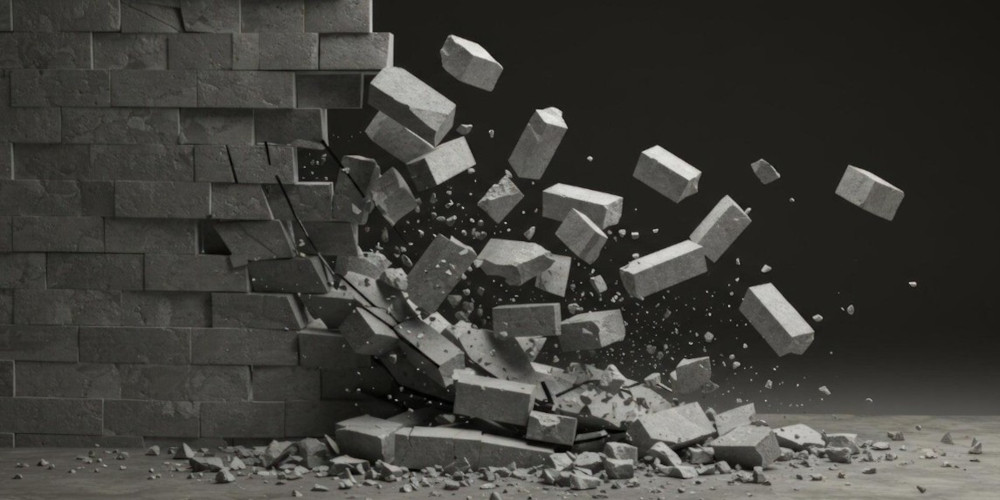-
Table of Contents

“Empowering Recovery, Relieving Pain: A New Path Forward”
Introduction
Addressing chronic pain in opioid recovery is a multifaceted challenge that requires a comprehensive and integrative approach. Chronic pain, a persistent and often debilitating condition, can significantly complicate the recovery process for individuals with a history of opioid use disorder (OUD). Effective management of chronic pain in this population necessitates a careful balance between alleviating pain and minimizing the risk of relapse. This involves the utilization of non-opioid pain management strategies, including pharmacological treatments, physical therapy, psychological support, and alternative therapies. Additionally, addressing the underlying causes of pain, enhancing patient education, and fostering a supportive healthcare environment are crucial components in promoting successful recovery and improving the overall quality of life for individuals struggling with both chronic pain and opioid dependence.
Holistic Approaches to Managing Chronic Pain During Opioid Recovery
Addressing chronic pain in opioid recovery is a multifaceted challenge that requires a comprehensive approach. As individuals embark on the journey to overcome opioid dependence, managing chronic pain without the use of opioids becomes a critical aspect of their recovery process. Holistic approaches to managing chronic pain offer promising alternatives that not only alleviate discomfort but also support overall well-being and long-term recovery.
One of the foundational elements of holistic pain management is the integration of physical therapies. Techniques such as physical therapy, chiropractic care, and acupuncture have shown significant benefits in reducing chronic pain. Physical therapy, for instance, focuses on strengthening muscles, improving flexibility, and enhancing mobility, which can help mitigate pain and prevent further injury. Chiropractic care, on the other hand, addresses misalignments in the spine and other joints, potentially reducing pain and improving function. Acupuncture, an ancient practice rooted in traditional Chinese medicine, involves the insertion of fine needles into specific points on the body to stimulate natural pain-relieving mechanisms.
In addition to physical therapies, mind-body practices play a crucial role in holistic pain management. Mindfulness meditation, yoga, and tai chi are powerful tools that help individuals develop a deeper awareness of their bodies and minds. Mindfulness meditation encourages individuals to focus on the present moment, reducing stress and anxiety, which are often exacerbated by chronic pain. Yoga combines physical postures, breathing exercises, and meditation to promote relaxation, flexibility, and strength. Tai chi, a gentle form of martial arts, emphasizes slow, deliberate movements and deep breathing, fostering a sense of calm and balance.
Nutrition also plays a vital role in managing chronic pain during opioid recovery. A balanced diet rich in anti-inflammatory foods can help reduce pain and promote healing. Foods such as leafy greens, berries, fatty fish, and nuts contain essential nutrients and antioxidants that combat inflammation and support overall health. Additionally, staying hydrated and avoiding processed foods, sugar, and excessive caffeine can further enhance the body’s ability to manage pain.
Another essential component of holistic pain management is the use of complementary and alternative medicine (CAM). Herbal supplements, essential oils, and homeopathic remedies offer natural options for pain relief. For example, turmeric and ginger are known for their anti-inflammatory properties, while lavender and peppermint essential oils can provide soothing effects when used in aromatherapy or topical applications. It is important, however, to consult with a healthcare professional before incorporating any CAM therapies to ensure they are safe and appropriate for individual needs.
Support systems are equally important in the journey of managing chronic pain during opioid recovery. Building a network of supportive friends, family members, and healthcare providers can provide emotional encouragement and practical assistance. Support groups, both in-person and online, offer a sense of community and shared experiences, helping individuals feel less isolated in their struggles.
Ultimately, addressing chronic pain in opioid recovery requires a holistic approach that encompasses physical, mental, and emotional well-being. By integrating physical therapies, mind-body practices, nutrition, complementary medicine, and strong support systems, individuals can find effective and sustainable ways to manage their pain. This comprehensive approach not only alleviates discomfort but also empowers individuals to reclaim their lives, fostering resilience and hope on their path to recovery.
The Role of Physical Therapy in Opioid Recovery for Chronic Pain Management
Addressing chronic pain in opioid recovery is a multifaceted challenge that requires a comprehensive approach. One of the most promising and effective strategies in this endeavor is the integration of physical therapy into the recovery process. Physical therapy offers a non-pharmacological alternative that not only alleviates pain but also empowers individuals to regain control over their lives. By focusing on the root causes of pain and promoting overall well-being, physical therapy plays a crucial role in helping individuals navigate the complexities of opioid recovery.
To begin with, physical therapy addresses chronic pain by targeting the underlying physical issues that contribute to discomfort. Through a personalized treatment plan, physical therapists assess each individual’s unique condition and develop exercises and techniques tailored to their specific needs. This personalized approach ensures that the therapy is both effective and sustainable, providing long-term relief from pain. Moreover, physical therapy helps to improve mobility, strength, and flexibility, which are often compromised in individuals suffering from chronic pain. By enhancing these physical attributes, patients can experience a significant reduction in pain and an improvement in their overall quality of life.
In addition to addressing the physical aspects of pain, physical therapy also plays a vital role in the psychological and emotional aspects of opioid recovery. Chronic pain often leads to feelings of helplessness, depression, and anxiety, which can hinder the recovery process. Physical therapists work closely with patients to set achievable goals and celebrate small victories, fostering a sense of accomplishment and boosting self-esteem. This positive reinforcement is essential in building the mental resilience needed to overcome the challenges of opioid recovery. Furthermore, the regular interaction with a compassionate and supportive therapist provides a sense of connection and encouragement, which is invaluable in maintaining motivation and commitment to the recovery journey.
Another significant benefit of physical therapy in opioid recovery is its ability to reduce the reliance on pain medications. As individuals progress through their therapy, they often find that their need for opioids diminishes. This reduction in medication not only decreases the risk of relapse but also minimizes the potential for side effects and dependency. By offering a viable alternative to opioids, physical therapy empowers individuals to take control of their pain management in a healthy and sustainable manner. This shift from a medication-centric approach to a holistic one is a critical step in breaking the cycle of addiction and achieving long-term recovery.
Moreover, physical therapy promotes overall health and wellness, which is essential for successful opioid recovery. Regular physical activity has been shown to release endorphins, the body’s natural painkillers, which can help to alleviate pain and improve mood. Additionally, physical therapy encourages healthy lifestyle choices, such as proper nutrition, adequate sleep, and stress management, all of which contribute to a more balanced and fulfilling life. By addressing the whole person, rather than just the symptoms of pain, physical therapy fosters a sense of well-being that is crucial for sustained recovery.
In conclusion, the role of physical therapy in opioid recovery for chronic pain management cannot be overstated. By addressing the physical, psychological, and emotional aspects of pain, physical therapy offers a comprehensive and effective approach to recovery. It empowers individuals to take control of their pain management, reduces reliance on medications, and promotes overall health and wellness. Through the dedicated efforts of physical therapists and the resilience of those in recovery, it is possible to overcome the challenges of chronic pain and achieve a brighter, healthier future.
Q&A
1. **Question:** What are some non-opioid medications used to manage chronic pain in individuals recovering from opioid addiction?
**Answer:** Non-opioid medications used to manage chronic pain in individuals recovering from opioid addiction include acetaminophen, nonsteroidal anti-inflammatory drugs (NSAIDs) like ibuprofen, antidepressants such as amitriptyline, and anticonvulsants like gabapentin.
2. **Question:** What are some non-pharmacological approaches to managing chronic pain in opioid recovery?
**Answer:** Non-pharmacological approaches to managing chronic pain in opioid recovery include physical therapy, cognitive-behavioral therapy (CBT), acupuncture, mindfulness meditation, and exercise programs.
Conclusion
Addressing chronic pain in opioid recovery requires a multifaceted approach that includes non-opioid pain management strategies, psychological support, physical therapy, and lifestyle modifications. Integrating these methods can help manage pain effectively while minimizing the risk of relapse, ultimately supporting long-term recovery and improving overall quality of life.



